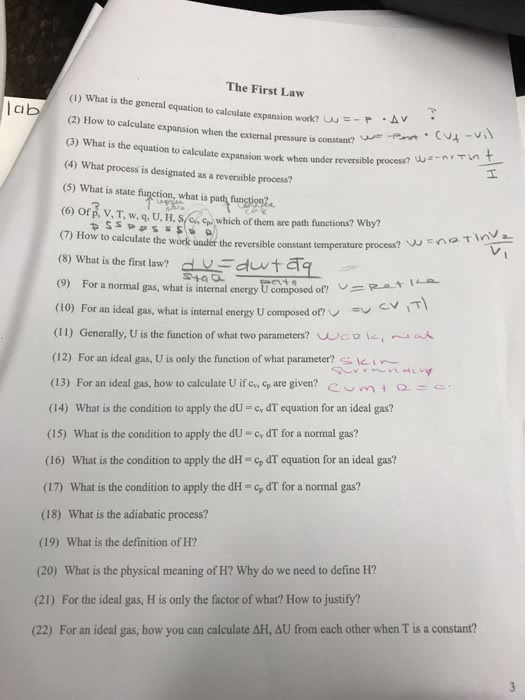CAS CH 112 Lecture Notes - Lecture 5: Lattice Energy, Molar Volume, Ideal Gas
Document Summary
No expansion work is done when the process occurs at constant volume: u = q. When the system is at constant pressure u = q+w = q p v. The total amount of energy used on a system which includes the energy associated with a change of volume at constant pressure: q= u + p v = h. Accounts for energy in/out when a system undergoes chemical or physical change when pressure is constant. At constant volume cv = u/ t and at constant pressure cp = h/ t: for an ideal gas cp= cv + (p v/ t) = cv + nr where n is moles of ideal gas. If the moles or volume of a gas change, then h doesn"t = u. What is in h: thermal energy from molecular motion, potential energy from bonds and intermolecular interactions, non-expansion work (electrical work) H for a process is negative for the reverse.


